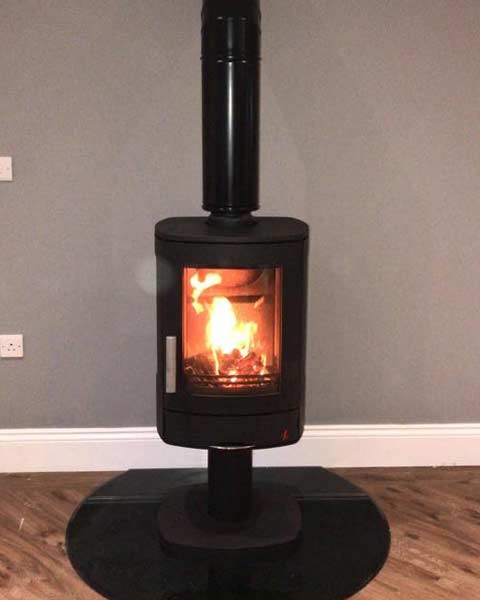Installing a cooking appliance can look as if a straightforward job, but in terms to safety measures and efficiency, professional stove installation is paramount. Whether it’s you’re transitioning from an electric to a natural gas stove or enhancing to a modern induction cooktop, grasping the nuances of stove installation can save you from potential issues. Homeowners often overlook the intricacies involved in hooking up a fresh appliance, especially when it involves gas piping or electrical systems.
In this manual, we will examine the essential aspects of stove installation that everyone should know. From deciding between a gas or electric stove to guaranteeing proper ventilation and adherence to safety standards, we will address it all. With so much at stake, including the risk of gas leaks and the necessity of local codes and permits, hiring a specialist is often the optimal decision for a easy installation. Let’s dive deeper into what you must know to avoid common pitfalls and make informed decisions for your culinary area upgrade.
Choosing the Appropriate Cooking Appliance: Gas vs. Electric
As considering a new stove, the primary decision homeowners need to make is if to select either gas or electric. Gas stoves are often preferred by chefs for their precise temperature control and instant heat adjustments. They utilize natural gas or propane, resulting in lower energy costs and faster cooking times. Nonetheless, they require a gas line installation and adequate ventilation to ensure safety and efficiency. This makes it vital for homeowners to assess their kitchen's setup and determine if they are equipped for a gas stove.
On the other hand, electric stoves are known for their ease of use and installation. They simply need an suitable electrical outlet, making them easier for many homes. Electric stoves, which include traditional and induction models, offer a variety of cooking features and can be more hygienic. Induction cooktops, in particular, are increasingly favored for their rapid heating and energy efficiency. Homeowners should evaluate their cooking habits and preferences when deciding between electric and gas options, as each has its advantages.
In the end, the choice between gas and electric stoves also comes down to personal preference and lifestyle. Gas stoves provide the quick control and tactile experience that some cooks yearn for, while electric stoves might attract to those looking for simplicity and modern technology. Both types have their advantages, and recognizing your cooking style, electrical capacity, and kitchen setup will help in making the right decision for your home.
Getting Ready for Installation: Essential Factors
Before the installation of a new stove, homeowners should evaluate their kitchen layout and available space to guarantee a proper fit. Take measurements of the area where the stove will be placed, taking into account the dimensions of the new appliance. This is especially important if you intend to move up to a larger model or switch from a freestanding unit to a slide-in configuration. Also, take into consideration the clearance requirements specified by the manufacturer, as well as local codes, to make sure there is adequate space for ventilation and safety.
Upgrading your stove may require evaluating existing utility connections, particularly for gas models. Property owners should determine if their current gas line is sufficient or if an upgrade is necessary. Log Burning stove installation to speak with a professional to evaluate the gas lines and ensure they meet the requirements for the new stove. Additionally, for electric stoves, make sure the outlet and electrical circuit can handle the appliance's power needs. This may require checking if an electrical upgrade is needed to prevent overloading and to ensure efficient operation.

Ventilation is another critical factor to consider when setting up a new stove. Proper ventilation aids to maintain indoor air quality and stops the accumulation of cooking fumes. If you are installing a gas stove, it is vital to have adequate ventilation to reduce the risk of gas leaks and exposure to harmful emissions. Homeowners should consider putting in an exhaust hood or making sure that the existing ventilation system is effective. Taking websites into account will help create a safe and functional cooking environment.
Safety and Compliance: Guaranteeing a Protected Installation
Guaranteeing a secure stove installation is crucial for preventing potential hazards in your home. https://parrish-roach-2.mdwrite.net/the-cost-of-stove-installation-reasons-why-it-is-beneficial-to-hire-a-specialist is important to acquaint yourself with regional stove installation regulations and permits, as such rules are designed to protect your safety. Ignoring such guidelines can lead to significant consequences, including fines or even hazardous situations like gas leaks or electrical fires. Always check with your local authorities or a qualified technician to ensure that all regulations are followed during the installation process.
One critical aspect of safety to consider is proper clearance around your stove. Ample space helps prevent fires and allows for adequate ventilation, which is especially important for gas stoves. Ensure you to follow the manufacturer’s instructions and local codes regarding the safe distances between the stove and combustible materials. This attention to detail not only enhances safety but also supports optimal stove performance and efficiency.
Engaging a professional for your stove installation can greatly reduce risks associated with improper installation. Professionals are skilled in the best practices for both gas and electric stove installations, guaranteeing that all safety measures are implemented. They can also identify any necessary upgrades, such as electrical or gas line modifications, which can help you avoid complications in the long run. By prioritizing expert installation, you secure the long-term safety and functionality of your kitchen.
